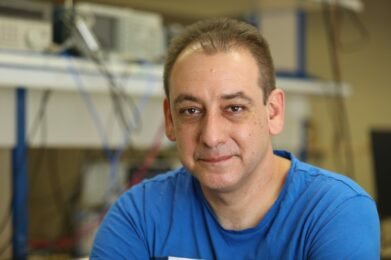The exponential growth of data communication makes photonic integration both a necessity and a reality. Optical communication is increasingly required over shorter links, and on ever larger scales. Silicon is the favored material platform for photonics integration, due to the promise of co-integration alongside electronics and unparalleled fabrication capabilities. One of the main tasks of silicon photonics is the filtering of ultra-broadband signals, that cannot be sampled and handled directly in the optical domain.
In this seminar, I will present several silicon-photonic integrated devices for the processing and filtering of optical and microwave-frequency input signals. Optical filters perform the de-multiplexing of 8 and 16 communication channels, with transmission bandwidths of tens or hundreds of GHz. The filters layouts comprise of cascaded interferometer and resonator feedback stages. The response of the filters is analogous to those of discrete-time digital filters, and they may be analyzed and synthesized using digital filters algorithms. Protocols for post-fabrication trimming of inevitable uncertainties in transfer function parameters will be discussed. Microwave filters are based on a novel surface acoustic wave (SAW)-photonic platform in silicon. Incoming modulation signals are converted from one optical carrier onto another, via slow-moving SAWs. Conversions to acoustic waves and back rely on thermo-elastic actuation and photo-elastic modulation, respectively. While in the acoustic domain, signals may be delayed over small footprint and filtered accordingly. Delay-and-sum microwave-photonic filters with up to 32 arbitrary coefficients are realized on-chip, with a single passband that is only 7 MHz wide. Delays accumulated on-chip reach 175 ns. The SAW-photonic devices also serve as microwave oscillators and in the analysis of thin layers deposition.



